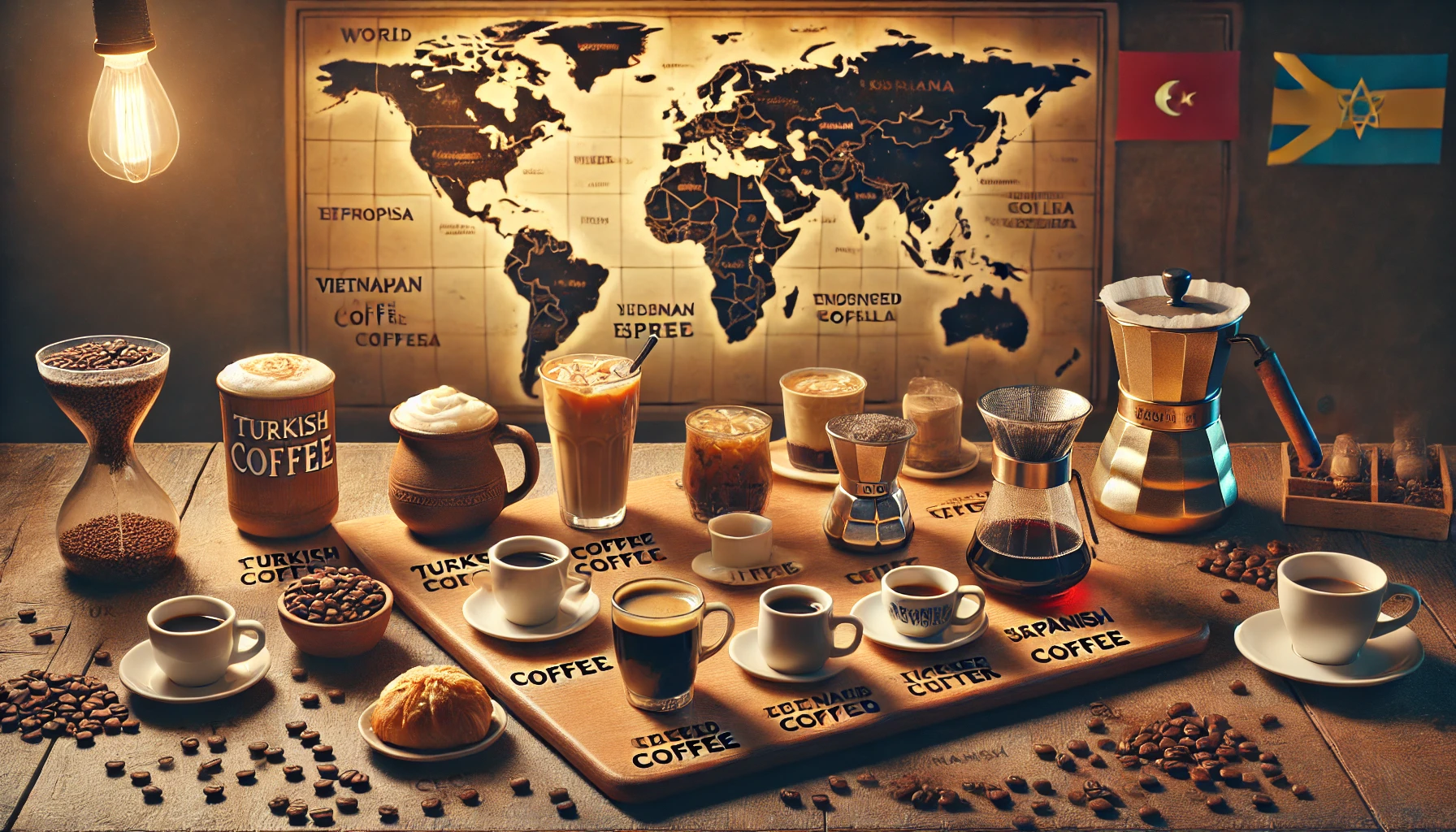Coffee is a universal love language—but every culture speaks it differently. From slow ceremonies to quick espresso shots, each country has its own way of turning beans into magic.
Let’s take a flavorful trip around the globe and discover how different cultures brew, serve, and savor their coffee. Maybe you’ll find your next favorite way to enjoy it!
Turkey: Fortune in a Cup
How it’s made: Super-fine coffee boiled in a cezve (small copper pot) with sugar (and sometimes cardamom). Served unfiltered—yes, you’ll get grounds at the bottom!
Tradition: After drinking, some flip the cup to read their fortune in the leftover sludge.
Tastes like: Thick, strong, and slightly gritty—like liquid energy.
Italy: Espresso or Nothing
How it’s made: Dark-roasted beans packed tight and blasted with hot water under pressure, creating a tiny but mighty shot with golden crema.
Tradition: Downed quickly at the bar—no lattes after 11 AM (Italians believe milk disrupts digestion).
Tastes like: Bold, smooth, and intense—like a wake-up call in a sip.
🇫🇷 France: Leisurely Café au Lait
How it’s made: Equal parts strong coffee + steamed milk, served in a wide bowl (perfect for dipping croissants).
Tradition: A slow morning ritual—never rushed.
Tastes like: Creamy, mellow, and comforting—like a hug in a cup.
Sweden: Fika, More Than Coffee
How it’s made: Simple filter coffee, usually black or with a splash of milk.
Tradition: Fika = coffee break + pastry + good company. It’s about slowing down, not just caffeine.
Tastes like: Smooth, balanced, and best enjoyed with a cinnamon bun.
Ethiopia: The Birthplace of Coffee
How it’s made: Raw beans roasted fresh, ground, and brewed in a clay jebena over charcoal. Served in three rounds—each cup gets milder.
Tradition: A ceremonial experience—coffee is about hospitality and connection.
Tastes like: Earthy, floral, and complex—where coffee’s story began.
Vietnam: Sweet & Strong Iced Coffee
How it’s made: Robusta beans dripped through a phin filter onto sweetened condensed milk + ice.
Tradition: Sipped slowly in street cafés, especially in sweltering heat.
Tastes like: Intense, chocolatey, and decadent—like dessert with a caffeine kick.
Japan: Precision in Every Drop
How it’s made: Pour-over with obsessive attention to detail—water temp, grind size, and pour speed matter.
Tradition: Treated like high art, similar to tea ceremonies.
Tastes like: Clean, bright, and perfectly balanced—coffee as science.
Mexico: Café de Olla (Spiced & Sweet)
How it’s made: Coffee simmered with cinnamon, cloves, and piloncillo (unrefined sugar) in a clay pot.
Tradition: A holiday favorite, often served on chilly nights.
Tastes like: Warm, spiced, and cozy—like a Mexican abuela’s hug.
Brazil: Cafézinho, the Welcome Drink
How it’s made: Strong, pre-sweetened coffee served in tiny cups.
Tradition: Offered to guests as a sign of hospitality—saying no is rude!
Tastes like: Bold, sugary, and always served with a smile.
Senegal: Café Touba (Spiced & Smoky)
How it’s made: Coffee blended with Guinea pepper (djar) and cloves, then filtered.
Tradition: Named after the holy city of Touba, it’s both spiritual and energizing.
Tastes like: Spicy, smoky, and unlike anything else.
Travel Through Taste: Try These at Home!
Want to explore without a passport?
- Make Vietnamese iced coffee (strong brew + condensed milk + ice)
- Host a mini Ethiopian ceremony (roast, grind, brew slowly)
- Sip like a Swede—take a fika break with friends and pastries
- Brew Mexican café de olla (cinnamon + piloncillo = magic)
Final Thought: Coffee Connects Us
No matter where you are, coffee is more than a drink—it’s a ritual, a welcome, a moment to pause. Whether you like it sweet, spiced, black, or bold, there’s a whole world of flavor in every cup.
So next time you brew, why not try it someone else’s way? You might just find a new favorite.
